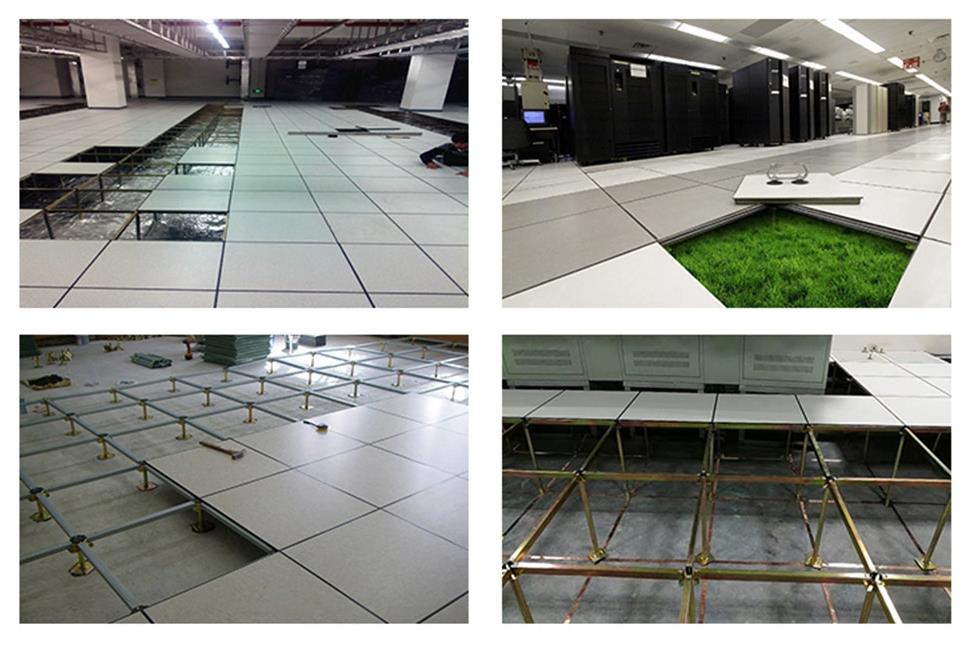Raised Floor Detail

Raised floor detail is a specialized service offered by Arifeen Marble, a leading installer and supplier of marble, tile, onyx, carpet, and travertine in the UAE. Our raised floor solutions provide numerous benefits, including improved air circulation, easy access to underfloor utilities, and enhanced aesthetics. With our expertise and experience, we ensure high-quality installation and polishing services for raised floors in Dubai, Ajman, Sharjah, Ras Al Khaimah, Fujairah, and Abu Dhabi. Trust Arifeen Marble for all your raised floor needs in the UAE.
Raised Floor Design Specifications
Raised floor design specifications refer to the detailed requirements and guidelines for the construction and installation of raised access flooring systems in buildings. These specifications typically include information on the materials to be used, load-bearing capacity, height and thickness of the raised floor, fire safety measures, electrical and data cabling requirements, and accessibility standards. Following these specifications ensures that the raised floor system meets the necessary structural, safety, and functional requirements for the intended use of the space.
Floor Elevation Information
Floor elevation information refers to the measurement of the height of a floor above a reference point, such as sea level or ground level. This information is important for various purposes, including construction planning, flood risk assessment, and property valuation. It helps determine the safety and stability of a building, as well as its vulnerability to natural disasters such as flooding or landslides. Floor elevation information is typically provided in building plans, surveys, and property records.
1. Different Types of Raised Floor Systems
Types of Raised Floor Systems
There are several different types of raised floor systems that are commonly used in commercial buildings. These systems provide a space underneath the floor for running cables, wires, and other utilities, while also allowing for easy access for maintenance and repairs. Some of the most common types of raised floor systems include:
1. Stringer Systems
Stringer systems consist of a grid of steel or aluminum supports that are connected by stringers. These systems are typically used in data centers and other high-tech facilities where a high level of structural support is required.
2. Bolted Stringer Systems
Bolted stringer systems are similar to traditional stringer systems, but they use bolts to connect the stringers to the supports. This allows for easier installation and maintenance, as the floor panels can be easily removed and replaced.
3. Truss Systems
Truss systems use a series of interconnected trusses to support the floor panels. These systems are often used in areas where a high level of flexibility is required, such as in office buildings or retail spaces.
4. All-Steel Systems
All-steel systems are made entirely of steel components, including the supports, stringers, and floor panels. These systems are extremely durable and can support heavy loads, making them ideal for industrial applications.
5. Woodcore Systems
Woodcore systems use a combination of wood and steel components to provide a strong and durable raised floor system. These systems are often used in areas where a more natural look is desired, such as in museums or art galleries.
raised floor detail Price in Dubai
| Detail | Price (AED) |
|---|---|
| Standard Raised Floor | 150 |
| Anti-Static Raised Floor | 200 |
| Wooden Raised Floor | 250 |
| Arifeen Marble | GET quotation |
raised floor detail Cutting
At Arifeen Marble, we are proud to offer top-notch services for raised floor installation and cutting in the UAE. Our team of experts is highly skilled in handling marble, tile, onyx, carpet, and travertine, ensuring that your project is completed with precision and care. Whether you are in Dubai, Ajman, Sharjah, Ras Al Khaimah, Fujairah, or Abu Dhabi, we are here to provide you with the best quality materials and craftsmanship for your raised floor needs. Trust Arifeen Marble for all your flooring solutions.
raised floor detail Installation
At Arifeen Marble, we are proud to offer top-notch installation services for raised floors in the UAE. Our team of experts is highly skilled in handling marble, tile, onyx, carpet, and travertine installations, ensuring a flawless finish every time. Whether you are looking to enhance the aesthetic appeal of your space or improve its functionality, our raised floor installations are the perfect solution. With a commitment to quality and customer satisfaction, we guarantee a seamless process from start to finish. Contact us today to learn more about our services in Dubai, Ajman, Sharjah, Ras Al Khaimah, Fujairah, and Abu Dhabi. Trust Arifeen Marble for all your raised floor installation needs.
raised floor detail Polishing
At Arifeen Marble, we are proud to offer top-notch polishing services for raised floors in the UAE. Our team of skilled professionals is dedicated to providing the highest quality workmanship and attention to detail. Whether you are looking to enhance the beauty of your marble, tile, onyx, carpet, or travertine raised floor, we have the expertise to bring out its natural shine and luster. With years of experience in the industry, we have built a reputation for excellence and customer satisfaction. Trust Arifeen Marble for all your raised floor polishing needs in Dubai, Ajman, Sharjah, Ras Al Khaimah, Fujairah, and Abu Dhabi.
FAQs
What are the key components and specifications of a raised floor system?
Key Components of a Raised Floor System:
- Steel pedestals
- Stringers
- Floor panels
- Support brackets
- Gaskets
Specifications of a Raised Floor System:
- Height: Typically ranges from 6 inches to 36 inches
- Weight capacity: Varies depending on the type of floor panel used
- Panel size: Standard size is 24 inches by 24 inches
- Material: Steel pedestals, aluminum or steel floor panels
- Finish: Powder-coated or galvanized for durability
What are the common challenges and maintenance requirements associated with raised floor systems?
Common challenges and maintenance requirements associated with raised floor systems:
- Proper cleaning and maintenance of the floor panels to prevent dust buildup
- Regular inspection of the support structure to ensure stability and safety
- Addressing any water damage or leaks promptly to prevent damage to the floor system
- Ensuring proper cable management to prevent tripping hazards and damage to cables
- Regularly checking and adjusting floor height to maintain evenness and stability
How can the design of a raised floor system impact the overall efficiency and functionality of a building?
Impact of Raised Floor System Design on Building Efficiency and Functionality
The design of a raised floor system can have a significant impact on the overall efficiency and functionality of a building. A well-designed raised floor system can provide several benefits, including improved air circulation, better cable management, and increased flexibility for future modifications.
One of the key advantages of a raised floor system is improved air circulation. By creating a space between the floor and the subfloor, a raised floor system allows for better airflow throughout the building. This can help to regulate temperature more effectively and improve overall indoor air quality.
Additionally, a raised floor system can make it easier to manage cables and wiring within a building. By running cables underneath the raised floor, it is easier to access and maintain the wiring infrastructure. This can help to reduce the risk of tripping hazards and make it easier to make changes or upgrades to the building’s technology systems.
Finally, a raised floor system can provide increased flexibility for future modifications to the building. By allowing for easy access to the space underneath the floor, it is easier to make changes to the layout or configuration of the building. This can be particularly useful in buildings that have changing needs or requirements over time.
What are the advantages of using a raised floor system in a commercial building compared to traditional flooring options?
Advantages of Using a Raised Floor System in a Commercial Building:
1. Improved Air Circulation: Raised floors allow for better air circulation, which can help maintain a comfortable indoor environment and improve air quality. 2. Easy Access to Cables and Wiring: The space underneath a raised floor provides easy access to cables, wiring, and other infrastructure components, making maintenance and upgrades simpler and more cost-effective. 3. Flexibility and Adaptability: Raised floor systems are modular and can be easily reconfigured to accommodate changes in layout or technology requirements. 4. Enhanced Aesthetics: Raised floors can hide unsightly cables and wires, creating a cleaner and more professional appearance in commercial spaces. 5. Increased Energy Efficiency: By allowing for better air circulation and more efficient cooling and heating systems, raised floors can help reduce energy consumption and lower utility costs.
What are the best practices for installing and maintaining a raised floor system to ensure optimal performance and longevity?
Best Practices for Installing and Maintaining a Raised Floor System
1. Properly plan and design the layout of the raised floor system to ensure optimal airflow and accessibility. 2. Use high-quality materials for the construction of the raised floor panels to prevent warping or damage over time. 3. Regularly inspect and clean the raised floor system to remove any debris or obstructions that could impede airflow. 4. Ensure that all cables and wires are properly organized and secured to prevent damage to the raised floor panels. 5. Implement a regular maintenance schedule to check for any signs of wear or damage and address them promptly to prevent further issues. By following these best practices, you can ensure that your raised floor system performs optimally and has a long lifespan.

